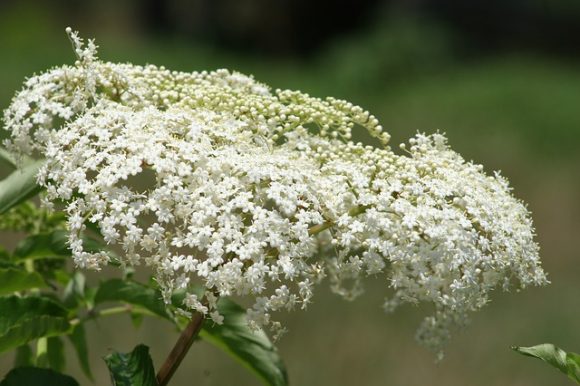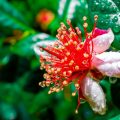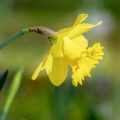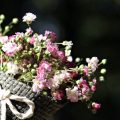- The Miraculous Shiny Bush Plant - January 18, 2021
- Colorful, Edible and Medicinal Celosia - January 10, 2021
- Radish, a Nutritional Power House - December 19, 2020
Baby’s breath, botanically known as gypsophila paniculata, is a genus of perennial flowering herbs in the carnation family. The plant is native to Australia, Eurasia, Pacific Islands, and Africa.
[Note: The Right Flowers is not a medical site. Knowledge of and information about the therapeutic benefits and applications of flowers, while known through the ages, does not constitute medical advice. If you are having health issues, you should consult with a physician.]
Normally, when you come across baby’s breath growing in clumps, the plants look like round, bluish-green or gray bushes. The plant features lance-like leaves, wiry stems and tiny white, blue, rose or pink flowers that bloom from spring to summer.
Baby’s breath was introduced to North American gardens in the 1800s as an ornamental plant but soon escaped from gardens and is now found growing in the wild. In the process, the plant also spread to other regions of the world. Baby’s breath can adapt quickly to new climatic conditions and thrive at the expense of indigenous species. As a result, it is considered a weed in some regions and fed to livestock.
The flower is used extensively in the cut flower industry as a filler blossom in bouquets where it is known to blend into a beautiful floral design. Apart from being used as a filler in bouquets, baby’s breath can be used as a bouquet on its own.
About a decade ago, scientists made a startling discovery that could save millions of lives yearly thanks to the baby’s breath blossoms. According to researchers, compounds found in the flower, commonly known as saponins show a significant ability to break down cancer cells. This enhances the ability of cancer drugs to attack the cancer cells thus increasing their efficiency by a million times.
This discovery was made by Leukemia Busters, a charitable organization based in the UK founded by Dr. David Flavell and his wife after their son, Simon Flavell, succumbed to the condition in the 90s. According to Dr. Flavell, this discovery is likely to change how anti-body drugs, commonly known as immunotoxins, work which can save many lives.
Currently, the challenge is to find a way to transform the discovery made in the laboratory into a practical solution for treating patients. This is because the initial findings must be taken through clinical trials before they can be available to patients. If all goes well, millions of leukemia patients around the world will benefit from lower doses of drugs in the next 3-5 years.
Nature never ceases to amaze. Here, you have a plant with tiny flowers used as filler blossoms for years, but now holding the potential of giving a new lease of life to not only leukemia patients, but other people struggling with various cancers. Truly, plants are miracles in nature waiting to be discovered!





